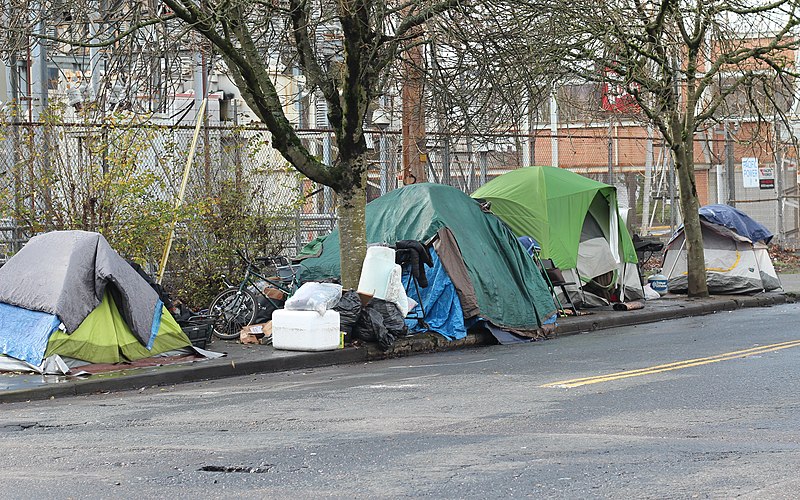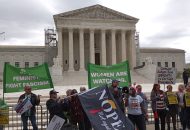Renewed Efforts to Address Homelessness Boon to Health Care

The House Committee on Financial Services met this past week to discuss how increasing Section 8 housing vouchers could reduce housing instability, overcrowding, and better prepare the nation for the next health or economic crisis.
“Providing a voucher to all eligible households would lift 9.3 million people above the poverty line and these benefits would be greatest among people of color,” said Ann Oliva, senior fellow at Center on Budget and Policy Priorities.
The year 2020 marked the fourth consecutive year that homelessness rose in the U.S., and it rose to such an extent that in 30 states, the number of people living on the street exceeded the number in shelters.
According to a study by the National Health Care for the Homeless Council, people who are homeless have higher rates of illness and die, on average, 12 years sooner, than the general U.S. population.
The reasons for this are plain. Living on the street, or in crowded homeless shelters, exposes individuals to a wide range of communicable diseases, unrelenting stress, malnutrition and violence.
As a result, homeless individuals typically experience more chronic health conditions, like diabetes, and behavioral health problems like depression and substance abuse, than the general population, the report said.
Under the Housing Choice Voucher Program that provides housing for 2.3 million low-income families, known as Section 8, participants pay 30% of their adjusted income on rent, and the remainder of the rent payment is subsidized through a voucher.
However, current law limits the number of Section 8 vouchers that can be issued, and only 23% of households eligible for a voucher actually receive one.
This is due in part to landlords rejecting the use of vouchers based on the source of income, or redlining, a method for denying financial or other services to residents in certain areas based on race or ethnicity.
“When the pandemic hit in March 2020, the United States had already been grappling with a severe and enduring affordable housing and homelessness crisis. Approximately 580,000 people were experiencing homelessness on any given night, and nearly 11 million renters were severely cost burdened. This crisis disproportionately impacts people of color, particularly Black and Latinx communities,” said Mary Cunningham, senior fellow and vice president, Metropolitan Housing and Communities Policy Center at the Urban Institute.
Data from the Department of Housing and Urban Development shows 48% of Section 8 voucher holders were Black, 32% were White, 17% were Hispanic, and 2% were Asian in 2017.
Voucher denial rates were highest in Fort Worth (78%) and Los Angeles (76%) and only somewhat lower in Philadelphia (67%), and rates were substantially lower in Newark (31%) and Washington, D.C. (15%), according to research from the Urban Institute.
To combat discriminatory practices by landlords, more than a dozen states have enacted source of income laws to bar landlords from rejecting prospective tenants because they are using housing assistance, or rejection based on factors like race and disability.
“The lack of stable housing for many caused immense human suffering and lives lost, but also put the rest of the country at risk, by reducing people’s ability to socially distance in place and increasing transmission rates,” said Cunningham.
Now, a bill known as End Homelessness Act of 2021, offers a plan to make housing choice vouchers an entitlement for those who qualify, and would ban landlords from discriminating against voucher holders.
However, the bill is receiving opposition from some Republican representatives, who say the $25 billion already given to repay back rent debts, and the $21.6 billion in rental assistance as part of the American Rescue Plan, did not provide the safety net for combatting homelessness that was proposed.
Rep. Patrick McHenry, R- N.C. said, “Nearly six months after the first launch of funding was enacted, the Treasury Department cannot tell us if anyone has actually had their back rent debts paid off.”
In April, President Joe Biden submitted a budget request for fiscal year 2022, to expand the Section 8 program by providing a total of $68.7 billion for HUD, an increase of $9 billion over the 2021 enacted level.
The funds would be allocated to boost investments to end homelessness, improve energy efficiency and resiliency in HUD-assisted housing, and increase the supply of affordable housing by broadening the availability of tenant-based rental assistance to 200,000 additional households in need of voucher assistance.
These resources would complement the $5 billion for emergency housing vouchers and changes in restrictive zoning provided under the American Rescue Plan to assist those who are homeless and at-risk of homelessness.
The budget request would raise the funds from $25 billion to $185 billion per year spent on affordable housing, to provide an additional 14 million households who could qualify for housing choice voucher program based on their income status alone.
Lawmakers have a little less than six months to pass the budget request before Oct. 1, the beginning of fiscal year 2022.
However, McHenry says the “progressive priority” would be nearly two and half times the entire annual cost of the Department of Homeland Security.
“To be clear, creating a universal housing voucher entitlement does nothing to increase the supply of rental housing. This means that skyrocketing demands, in already expensive markets, would drive rental prices higher and make affordable units less available,” said McHenry.
Committee Republicans will soon introduce a different bill, which McHenry said is an attempt, “to end mismanagement of the emergency rental assistance program.” The Republican-led bill would ensure that $46 billion would be used to settle back rent debts and protect renters facing admission.
Cunningham said the funds for the American Rescue plan were not mismanaged but were under timing constraints.
“Congress responded with billions of dollars in emergency housing assistance, but states and localities are rushing and working overtime to distribute these funds before the CDC eviction moratorium expires…” said Cunningham.
In September 2020, the Centers for Disease Control and Prevention issued an eviction protection for tenants to prevent landlords from evicting residents, even if it was within their legal rights, which is set to end on June 30, 2021.
Last month, the Urban Institute found that an estimated 7 million renters were still behind on their rent, and about 3 million people reported likelihood of facing eviction.
“If housing assistance were available to everyone who qualified before the pandemic, then families could more easily have navigated the sudden job loss, and landlords could have consistently covered their expenses,” said Cunningham.
Representatives in favor of the bill aimed at ending homeless, and proponents of universal vouchers, seek to include a source of income protections, adopt small area fair market rents, and provide housing search assistance and navigation to those who are most vulnerable.
The bill also aims to include incentives for land use and zoning reform at the local and state level and provide investments in the development of new affordable units, with focus on banning discrimination based on source of income and veteran status.
Cunningham says research shows that adoption of universal housing vouchers could reduce poverty and close racial disparities in housing and homelessness and would also benefit landlords.
Using an analysis of transfers, taxes, and income security tools, The Urban Institute modeled expanding the housing choice voucher program to everyone who is currently eligible.
Their findings show that this expansion would cover an additional 19.7 million people and 8.2 million households. The average household subsidy cost for new recipients would be $628 per month, or about $7,500 per year, and the total cost annually for expansion would be $62 billion per year.
Challenges with obtaining affordable housing can also cause an individual to not be able to invest in their own economic mobility, as one estimate given from Benjamin Metcalf, managing director, Terner Center for Housing Innovation, University of California, Berkeley, said that $1.6 trillion a year could be saved in lost wages and productivity from this housing crisis.
“During the Biden campaign, he proposed expanding the voucher program to everyone eligible, but so far we haven’t seen a concrete plan to do that,” said Will Fischer, senior director for Housing Policy and Research at the Center on Budget and Policy Priorities.
Only one in four households currently receive assistance, and Fischer said that the bill to expand the number of vouchers to provide funding for everyone who meets the criteria should be included in any future recovery proposals considered by the Biden administration.
“The budget request for vouchers is only an increase of 200,000 vouchers, and to achieve a portion of reducing the poverty rate, you would need to have an expansion to provide vouchers to everyone who is eligible,” Fischer said.
























